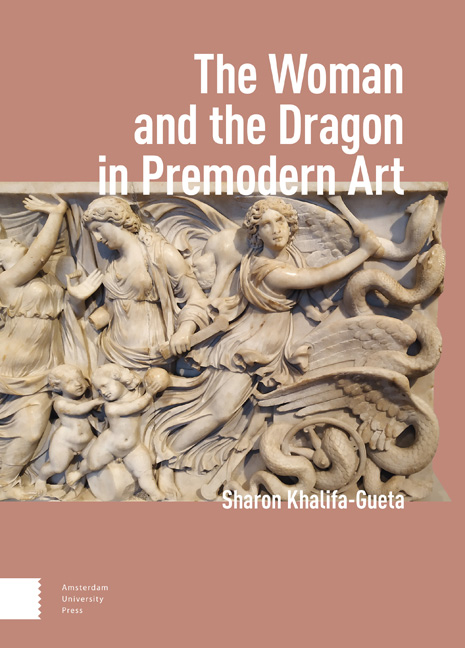Book contents
- Frontmatter
- Contents
- Acknowledgments
- Introduction
- 1 The Dragon
- 2 The Cave and the Womb: The Myth of Cadmus and the Myth of Apollo and Python
- 3 Eligible Wives and Monstrous Women: Andromeda and Medusa
- 4 Medea – The Holy Woman and the Witch
- 5 Eve and Lilith — Christianizing the Great Goddess and the Dragon
- 6 Saint Margaret – Taming the Dragon
- Conclusion
- Bibliography
- Index
2 - The Cave and the Womb: The Myth of Cadmus and the Myth of Apollo and Python
Published online by Cambridge University Press: 17 February 2024
- Frontmatter
- Contents
- Acknowledgments
- Introduction
- 1 The Dragon
- 2 The Cave and the Womb: The Myth of Cadmus and the Myth of Apollo and Python
- 3 Eligible Wives and Monstrous Women: Andromeda and Medusa
- 4 Medea – The Holy Woman and the Witch
- 5 Eve and Lilith — Christianizing the Great Goddess and the Dragon
- 6 Saint Margaret – Taming the Dragon
- Conclusion
- Bibliography
- Index
Summary
Abstract: This chapter attends to the myth of Cadmos and to the myth of Apollo and Python. My analysis of the Cadmos myth sheds light on the intriguing visual iconography of the woman and the dragon, and on the recurrence of symbolic motifs such as the cow and the cave in myths associated with a Great Goddess. My discussion of the Apollo and Python (or Delphina) myth suggests that Python is a representation of a Great Mother Goddess, while also considering the ritualistic role of the Pythia and her mythical connection with the dragon. The scope of the discussion is broadened by an examination of Greco-Roman religious rituals and sanctuaries characterized by a unique and holy relationship between women and dragons.
Key Words: Cadmos, cow, Apollo, Pythia, Great Goddess, Python, cave
Whereas male protagonists in Greco-Roman antiquity fight dragons, as demonstrated in the previous chapter, female protagonists do not. Rather, as this chapter and the following two chapters contend, female protagonists communicate and collaborate with dragons, becoming fused with them. This relationship is represented through the motif of the woman and the dragon. This motif includes three different types, which all feature a woman and a dragon together with a recurrent set of attributes, and in relation to particular settings. The following discussion centers on the type I describe as “the holy woman,” which serves as the basis for the two other types. It examines the symbolic analogy between woman, dragon and cave, with an emphasis on scenarios charged with sacred, oracular, protective, and healing properties. More specifically, the discussion focuses on the etiological myths of Cadmos and of Apollo and Python, which are both establishing foundation myths (terminus ante quem). The foundations for the investigation of the Cadmos myth and the Apollo and Python myth were first laid by Joseph Fontenrose's Python, which is complemented by Neil Forsyth's The Old Enemy: Satan and the Combat Myth. Both scholars investigated the origin and development of the dragon-slayer topos, and related it to the symbolism of the cave. However, neither of these studies attends to the feminine aspects of this metaphorical setting, which will be elaborated upon below.
- Type
- Chapter
- Information
- The Woman and the Dragon in Premodern Art , pp. 47 - 88Publisher: Amsterdam University PressPrint publication year: 2023



